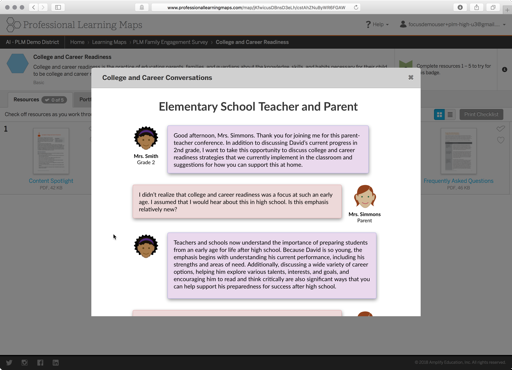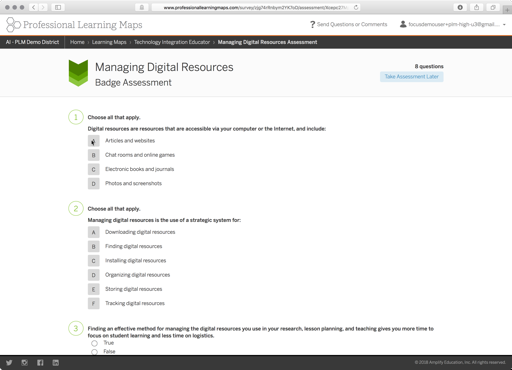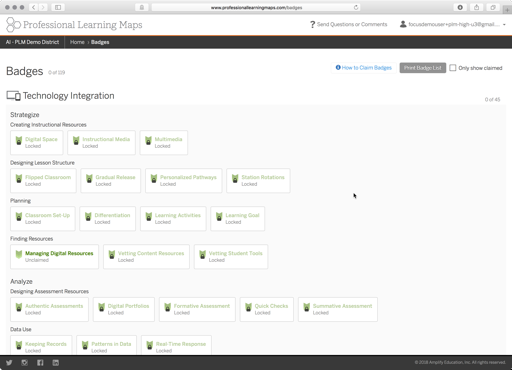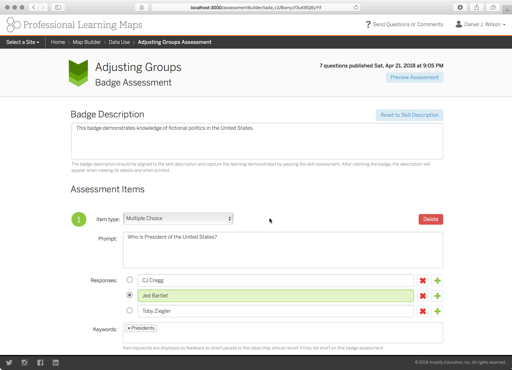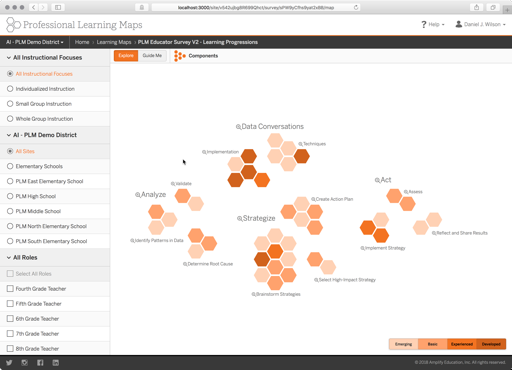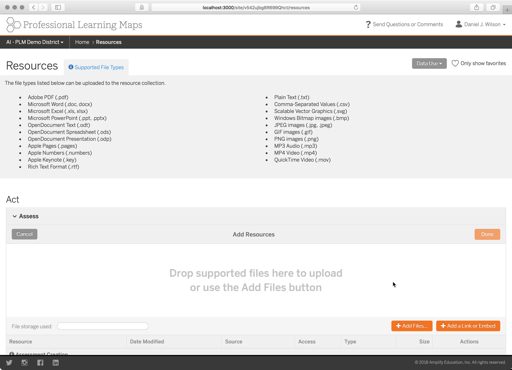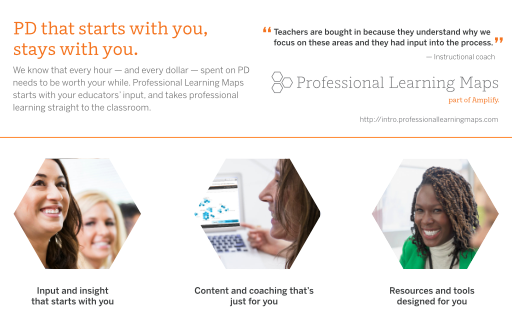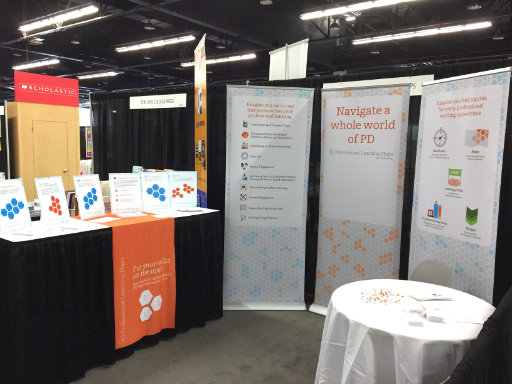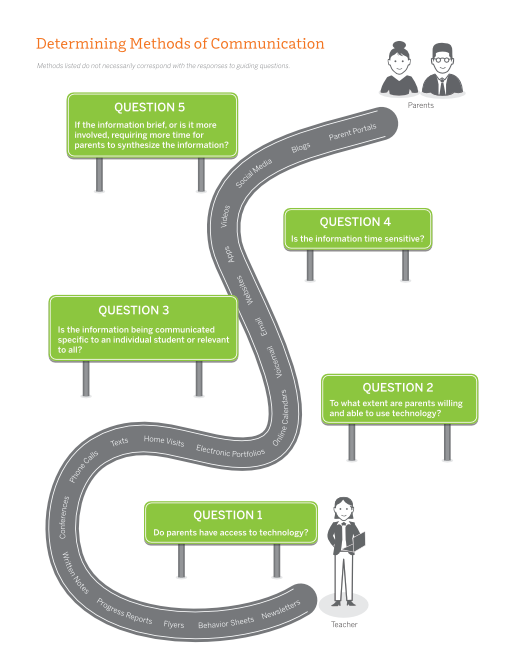Reimagining K–12 professional development
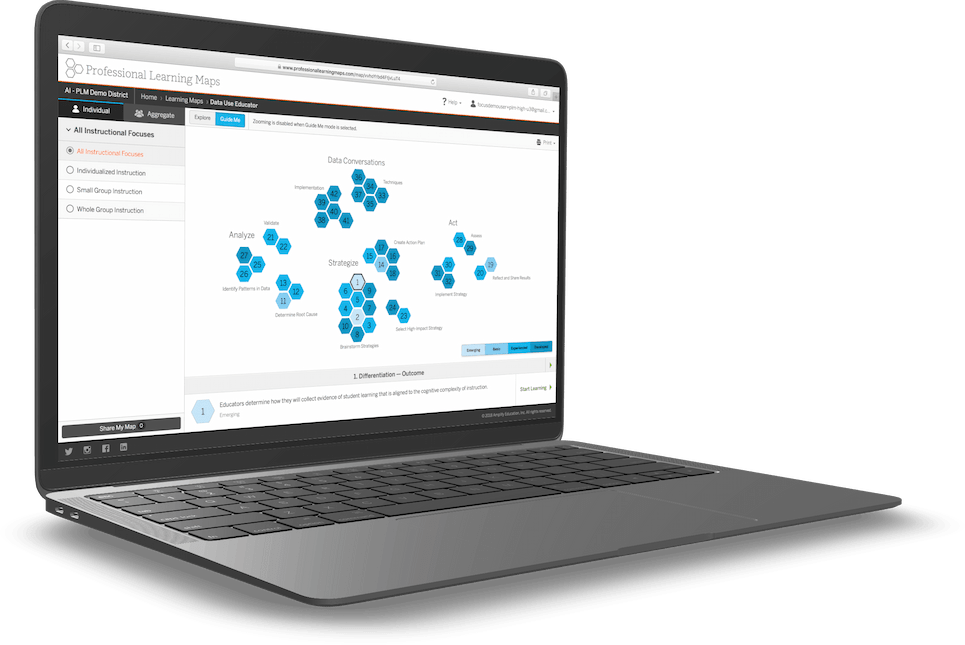
What's wrong with PD?
Professional development for K – 12 educators is frequently a day of PowerPoint presentations that deliver the same message to each educator, regardless of their individual experience, strengths, and areas of need. Even if a presentation is relevant, educators can't easily incorporate it in their classroom teaching. This leads to many educators being disengaged with professional development.
Based on her experience as a teacher and administrator, our team leader, Emily Lutrick, saw that an online platform could support each educator's evolution and provide an aggregate picture for leadership so they know where to focus their professional development time and budget.
This is the first time in twenty five years of teaching that I walked away from PD excited to share my learning with my students.
As an experienced professional developer, responsible for campus, district and all personnel levels of professional learning, and involved in national projects, the goal is to always personalize professional development, but it's not easy. Professional Learning Maps is a research-based, easy to use tool that greatly supports our efforts.
Reflecting on practices and visualizing skill confidence
After responding to a survey about their classroom practices, educators accessed a map that color-coded their confidence level for each skill within a topic such as using technology in the classroom or connecting the classroom with the local community. From there, educators chose to either learn skills in their preferred order or follow a sequence suggested by the PLM algorithm based on skill confidence level and difficulty.

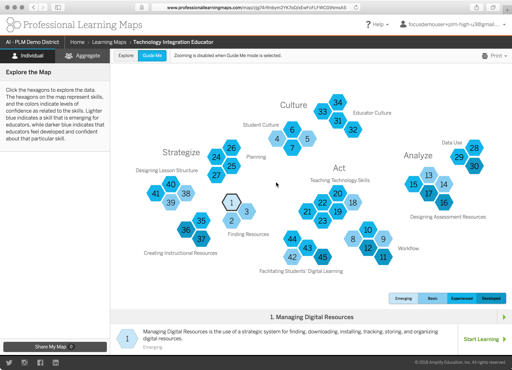
Supporting skill learning & use
Educators expanded their skill knowledge and practice through materials crafted by a team of professional development writers. I supported their efforts through the design of icons and illustrations and production of interactive modules, PDF documents, and lesson templates. I made sure the PDF documents worked well online and when printed — many teachers prefer printed documents.
Marking educator progress
How can educators show that they have been engaged in professional development? Once an educator worked through the resources provided by the PLM team, they could take a short assessment to claim a badge. The educator could print their badge view to include in their yearly portfolio, usually a part of an educator's annual review.
Building skill badge assessments
Offering a badge for each skill means first building an assessment for each skill. To that end, the team needed an internal tool for creating assessments that could be used without requiring work from the development team. Assessment expert Christine Burke determined the number and types of items that would be needed to provide meaningful assessment of skill knowledge, I designed the interface with those constraints in mind, and Jessica wrote the code to make it real. Our teammates found it very easy to use.
Providing insight to leadership
We knew we also needed to provide insight into professional development for state, district, and campus leaders. Once a quorum of educators completed a survey, an anonymized aggregate map would be generated. Leaders could use this map to inform their group professional development planning and answer questions like “Where do my teachers need support?”, optionally filtering the data to just a particular campus or educator role. They could also supplement the PLM-authored resources with their own that support their particular way of teaching or implementing a skill.
Marketing
I designed advertisements, marketing one-sheets, and conference booth banners and posters. This required expanding my knowledge of print design and tools such as InDesign and Affinity Designer.
Educator materials
I worked closely with Christine Burke, the PD design expert on our team, to design skill learning resources for educators. Sometimes this meant providing graphical assets, sometimes it meant designing individual documents and interactive modules.

